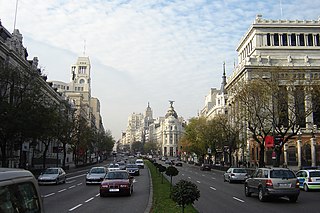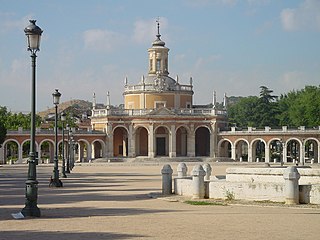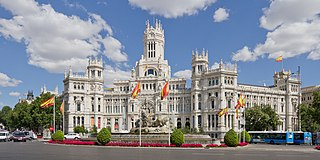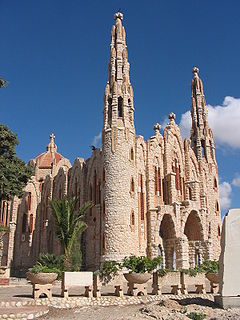| House of Gallardo | |
|---|---|
 | |
| General information | |
| Location | Calle de Ferraz 2, Madrid, Spain |
| Coordinates | 40°25′24″N3°42′51″W / 40.423205°N 3.714225°W Coordinates: 40°25′24″N3°42′51″W / 40.423205°N 3.714225°W |
| Construction started | 1911 |
| Completed | 1914 |
| Design and construction | |
| Architect | Federico Arias Rey |
The House of Gallardo (Spanish: Casa Gallardo) is a building located in Madrid, Spain.

Spanish or Castilian, is a Romance language that originated in the Iberian Peninsula and today has over 450 million native speakers in Spain and in the Americas. It is a global language and the world's second-most spoken native language, after Mandarin Chinese.

Madrid is the capital and most populous city of Spain. The city has almost 3.3 million inhabitants and a metropolitan area population of approximately 6.5 million. It is the third-largest city in the European Union (EU), surpassed only by London and Berlin, and its monocentric metropolitan area is the third-largest in the EU, smaller only than those of London and Paris. The municipality covers 604.3 km2 (233.3 sq mi).

Spain, officially the Kingdom of Spain, is a European country located in Southwestern Europe with some pockets of Spanish territory across the Strait of Gibraltar and the Atlantic Ocean. Its continental European territory is situated on the Iberian Peninsula. Its territory also includes two archipelagoes: the Canary Islands off the coast of Africa, and the Balearic Islands in the Mediterranean Sea. The African enclaves of Ceuta, Melilla, and Peñón de Vélez de la Gomera make Spain the only European country to have a physical border with an African country (Morocco). Several small islands in the Alboran Sea are also part of Spanish territory. The country's mainland is bordered to the south and east by the Mediterranean Sea except for a small land boundary with Gibraltar; to the north and northeast by France, Andorra, and the Bay of Biscay; and to the west and northwest by Portugal and the Atlantic Ocean.
Projected by Federico Arias Rey, it is one of the relatively few modernista buildings preserved in Madrid. [1] It was declared Bien de Interés Cultural in 1997. [1] It is located in calle de Ferraz 2, [1] near the plaza de España.

Art Nouveau is an international style of art, architecture and applied art, especially the decorative arts, known in different languages by different names: Jugendstil in German, Stile Liberty in Italian, Modernisme in Catalan, etc. In English it is also known as the Modern Style. The style was most popular between 1890 and 1910. It was a reaction against the academic art, eclecticism and historicism of 19th century architecture and decoration. It was often inspired by natural forms such as the sinuous curves of plants and flowers. Other characteristics of Art Nouveau were a sense of dynamism and movement, often given by asymmetry or "whiplash" curves, and the use of modern materials, particularly iron, glass, ceramics and later concrete, to create unusual forms and larger open spaces.
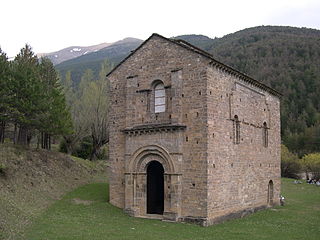
A Bien de Interés Cultural is a category of the heritage register in Spain. The term is also used in Venezuela, and other Spanish-speaking countries.



